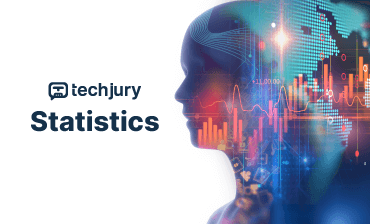Imagine standing at the precipice of a technological transformation so profound that it fundamentally reshapes how we work, think, and interact with the world around us. Welcome to the AI revolution of 2024 – a landscape where artificial intelligence is no longer a distant dream but an immediate, transformative reality.
As a data analysis specialist who has witnessed the remarkable evolution of technology, I can confidently say we are experiencing an unprecedented moment in human innovation. Artificial intelligence has transcended theoretical discussions and emerged as a powerful, practical tool driving unprecedented changes across industries, economies, and human experiences.
The Global AI Market: A Landscape of Exponential Growth
The artificial intelligence market isn‘t just growing – it‘s exploding with potential. In 2024, we‘re observing a market trajectory that defies traditional technological adoption curves. Projections indicate the global AI market will reach a staggering [500 billion USD] by the end of this year, representing a compound annual growth rate that would have seemed impossible just half a decade ago.
What‘s driving this extraordinary expansion? Multiple interconnected factors are converging to create a perfect ecosystem for AI development. Technological advancements, reduced computational costs, massive data availability, and increasing enterprise adoption are fundamentally restructuring how businesses perceive and implement artificial intelligence.
Investment Landscape: Corporate Commitment to AI
Corporate investment in AI has shifted from experimental to strategic. A remarkable 91.7% of Fortune 1000 companies are not just exploring but actively integrating AI technologies into their core operational strategies. This isn‘t merely a trend – it‘s a wholesale transformation of business methodologies.
The United States continues to lead global AI private investments, channeling an impressive [47.4 billion] in 2024 alone. This represents a significant lead over other global technology markets, underscoring America‘s continued technological leadership. Interestingly, the investment isn‘t concentrated in a single sector but spans healthcare, finance, manufacturing, and emerging technological domains.
Technological Innovations: Beyond Traditional Boundaries
Artificial intelligence in 2024 has evolved far beyond simplistic algorithmic processes. We‘re witnessing the emergence of sophisticated systems capable of nuanced understanding, predictive analysis, and complex problem-solving across multiple domains.
Natural Language Processing: Redefining Human-Machine Interaction
Consider the remarkable advancements in natural language processing. Modern AI systems can now understand contextual nuances, interpret complex linguistic structures, and generate human-like responses with unprecedented accuracy. Large language models have transformed from rudimentary translation tools to sophisticated communication platforms capable of supporting multiple professional and creative tasks.
Computer Vision: Seeing Beyond Human Limitations
In computer vision, AI has achieved capabilities that border on extraordinary. Advanced systems can now perform intricate visual recognition tasks, from medical diagnostic imaging to complex manufacturing quality control, with accuracy that often surpasses human perception.
Industry-Specific Transformations
Healthcare: A Technological Renaissance
The healthcare sector exemplifies AI‘s transformative potential. Predictive diagnostic tools powered by machine learning algorithms can now detect potential health risks with remarkable precision. AI-driven systems analyze complex medical imaging, genetic data, and patient histories to provide insights that were previously impossible.
By 2026, the global healthcare AI market is projected to reach [45.2 billion], representing a compound annual growth rate of 44.9%. This isn‘t just technological advancement – it‘s a fundamental reimagining of medical diagnostics and patient care.
Manufacturing: Precision and Efficiency Redefined
Manufacturing has experienced a profound AI-driven metamorphosis. Robotic process automation, powered by sophisticated machine learning algorithms, has transformed production lines. Predictive maintenance systems can now anticipate equipment failures before they occur, reducing downtime and optimizing operational efficiency.
Approximately 59% of manufacturing companies now utilize AI for quality control, representing a significant shift from traditional quality assurance methodologies.
Economic and Workforce Implications
The AI revolution isn‘t just technological – it‘s fundamentally restructuring labor markets and economic paradigms. Projections suggest 85 million potential job displacements by 2025, balanced against the creation of 97 million new AI-related roles.
This isn‘t a narrative of job elimination but of job transformation. The emerging workforce will require adaptability, continuous learning, and a symbiotic relationship with artificial intelligence technologies.
Emerging Job Landscape
We‘re witnessing the rise of entirely new professional categories. AI specialists, machine learning engineers, and data ethicists are becoming critical roles across industries. The demand for professionals who can navigate the complex intersection of technology, ethics, and innovation continues to surge.
As AI capabilities expand, so do critical ethical considerations. Seventy-six percent of consumers express concerns about AI-generated misinformation, highlighting the importance of transparent, responsible technological development.
Addressing algorithmic bias, ensuring data privacy, and maintaining human-centric design principles are no longer optional – they‘re fundamental requirements for ethical AI implementation.
Future Outlook: Beyond 2024
Looking forward, experts predict a 50% probability of affordable transformative AI systems emerging by 2050. We‘re not just talking about incremental improvements but potentially revolutionary technological paradigms.
Imagine autonomous vehicles representing 10% of global transportation, AI-driven healthcare diagnostics becoming standard practice, and machine learning algorithms supporting complex scientific research. These aren‘t distant possibilities – they‘re emerging realities.
Conclusion: Embracing Technological Potential
The AI revolution represents more than technological advancement. It‘s a testament to human creativity, our capacity for innovation, and our ability to reimagine what‘s possible.
For businesses, technologists, and innovators, the message is clear: adaptability, continuous learning, and a forward-looking perspective are your greatest assets in this transformative era.
As we stand at this extraordinary technological frontier, one thing becomes abundantly clear – the future isn‘t something that happens to us. It‘s something we actively create, one algorithm, one innovation at a time.
